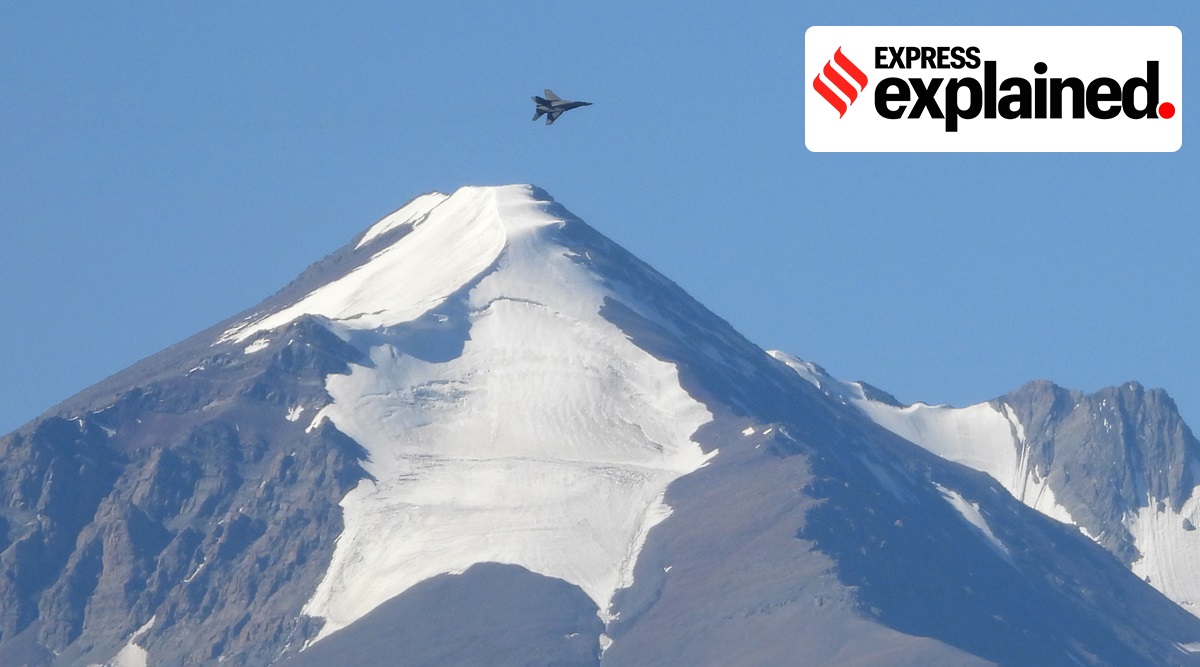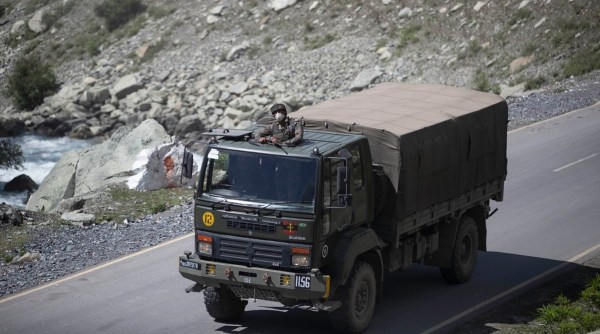
The Indian Express
An Expert Explains: In India-China border row, the state of play in Ladakh
While Indian Army has gained an advantage by taking the Chushul heights, a diplomatic and military long haul seems likely. Until LAC is delineated, the Chinese can be expected to continue violations of Indian territory.
by V. P. MalikHow dangerous is the situation given the People’s Liberation Army numbers, firepower, and the area they are occupying?
The People’s Liberation Army has deployed over two regular divisions (about 40,000 troops) along with supporting arms, logistic services and air force along the Eastern Ladakh frontline and as back-up. India too, has about two regular Army divisions supported by the Indian Air Force in this sector now.
Along the Line of Actual Control (LAC), the PLA has now occupied many areas which were earlier considered ‘disputed’, that is, lying between Chinese and Indian perceptions of the LAC.
https://images.indianexpress.com/2020/08/1x1.png
On Finger 4, north of Pangong Tso, the opposing troops are deployed a few hundred metres apart. On the south bank of Pangong Tso, they are occupying heights that overlook each other’s military camps and vital road communications.
With such close and large deployment, coupled with lack of trust after the [June 15-16] Galwan incident [in which 20 Indian soldiers were killed], the pre-emptive occupation of the Kailash Range by Indian troops on August 29-30, and the PLA’s provocative action on September 7 [when shots were fired along the LAC for the first time in 45 years], the situation on the ground, particularly in the Chushul sector, is indeed very tense and explosive.
Besides, accusations and counter-accusations flying thick and fast are only adding to the tension.
What does domination of the Fingers area by the Chinese mean for India?
On the north bank of Pangong Tso, there are eight major finger-like spurs coming down to the Tso (lake). From heights along these spurs, one can observe military activity on the north and south banks of Pangong Tso.
The Chinese and Indian (perceived) LACs are about 8 kilometres apart (between Finger 4 and Finger 8) in this area. In May, the PLA occupied this disputed area, deployed troops on Finger 4, and blocked Indian troops, which used to earlier patrol the areas up to Finger 8.

What are the advantages India gets by occupying the heights in Chushul sector?
Heights in the mountains enable observation of the adversary’s military activities in the (visible) area, and the ability to bring down accurate direct and indirect fire on the chosen enemy target.
What if the talks don’t lead to any disengagement on the ground?
In the current situation, it will be a long haul on both the diplomatic and military fronts. India’s forces on the ground have to remain alert to ensure that the PLA does not take any advantage during the lull created by long diplomatic engagement.
Remember, it took nearly six years to resolve the Sumdorong Chu incident (1986) diplomatically.
The Chinese are also present near Demchok and Sub Sector North. How does India deal with that?
In Demchok, the PLA has been objecting to India’s non-military developmental activities — road and water channel — for India’s civilian population. About 90 km from Demchok, at Chumar, it had made territorial claims and military advances in September 2014.
There has been an LAC-related dispute in the Depsang Plains in Sub Sector North. In April 2013, the PLA troops set up a temporary camp in our area, but later withdrew. They have again occupied some area claimed by us. This has resulted in additional deployment of troops, including armour and artillery by both sides.
All these disputes in Eastern Ladakh, and elsewhere, are related to the LAC which has not been delineated on the maps. India has made many efforts, even at the highest level, but the Chinese have steadfastly refused. An ambiguous LAC enables the Chinese to continue with frequent pin-prick activities, and thus maintain political and military pressure on India.
In the recent incidents, China has deliberately violated all the confidence-building agreements and the perceived alignment of the LAC until now. Unless the LAC is delineated on the map, without prejudice to the final boundary settlement, such violations of Indian territory by the PLA are likely to continue, as these suit China strategically.
How will India cope if the Eastern and Central sectors too, see a Ladakh-like situation?
The situation in eastern Ladakh has already caused tension and the deployment of additional troops along the LAC and vulnerable points in the Central and Eastern sectors. This has become necessary due to the breach of trust with China.
What logistics challenges will Indian troops face in establishing defences in the coming months?
We have never deployed such large forces (Army, Air Force and paramilitary forces) in Ladakh earlier. As road access to Ladakh will not be available between mid-November and mid-May (2021), the winter stocking requirement for civilians and the military is huge. The IAF will remain heavily committed for essential daily maintenance and movement of troops whenever necessary.
What are the chances of the Ladakh situation leading to a conflict? Is there a weather window?
Climatically, intense conflict chances remain high until mid-November. The winter months will reduce the intensity, but we cannot expect a complete stoppage. Aerial and ground surveillance, infantry and artillery deployments will continue.
How important will be the role of the IAF in case of any armed conflict?
Today, one cannot imagine any armed conflict situation without synergy and jointness among armed forces.
The IAF has a crucial role at the strategic and operational levels. Besides its primary role of protecting air space and vulnerable areas/assets, it will be actively engaged in aerial reconnaissance, destroying enemy targets and providing tactical and logistic support to the Army.

What are the chances of this situation turning into a two-front threat with Pakistan also throwing its weight behind China?
China and Pakistan are already engaged in a ‘collusive threat’ (engaged in secret or hidden avowed goals) vis-à-vis India.
China is unlikely to bank on Pakistani collaboration or participation in any large-scale conflict with India. In the current scenario, however, a limited China-Pakistan military collaboration in the Karakoram Pass region cannot be ruled out. Its manifestations could be activation of diversionary military movements by Pakistan in Siachen and Kargil sectors, and an intensification of proxy war conditions in Jammu & Kashmir.
What else can be done by the Government of India to make it easier to craft a long-term China strategy or negotiate a solution?
National security, particularly armed conflict issues, requires a ‘whole of the government’ approach.
Unfortunately, we in India have not come out of the habit of working in ministerial silos and stovepipes which in the past have often resulted in military operations not achieving the desired strategic goals. Unlike western democratic nations, our ministers and civil officials are still shy of involving military personnel directly in defence policy-making or while negotiating such issues with foreign political leaders.
General V P Malik (retd) was Chief of Army Staff who led India to victory in the Kargil War of 1999 against Pakistan. He is well-versed in the challenges that high-altitude deployment pose, having commanded an infantry brigade in Jammu and Kashmir and a mountain division before heading a corps and a command. He was also Chairman of the Chiefs of Staff Committee.